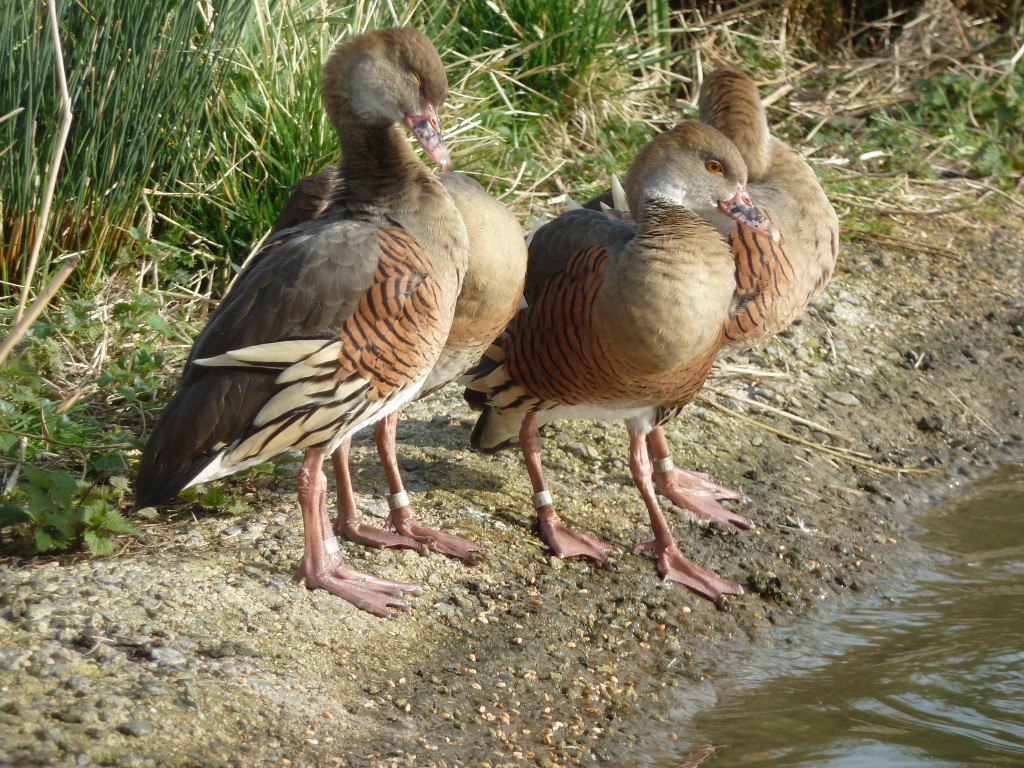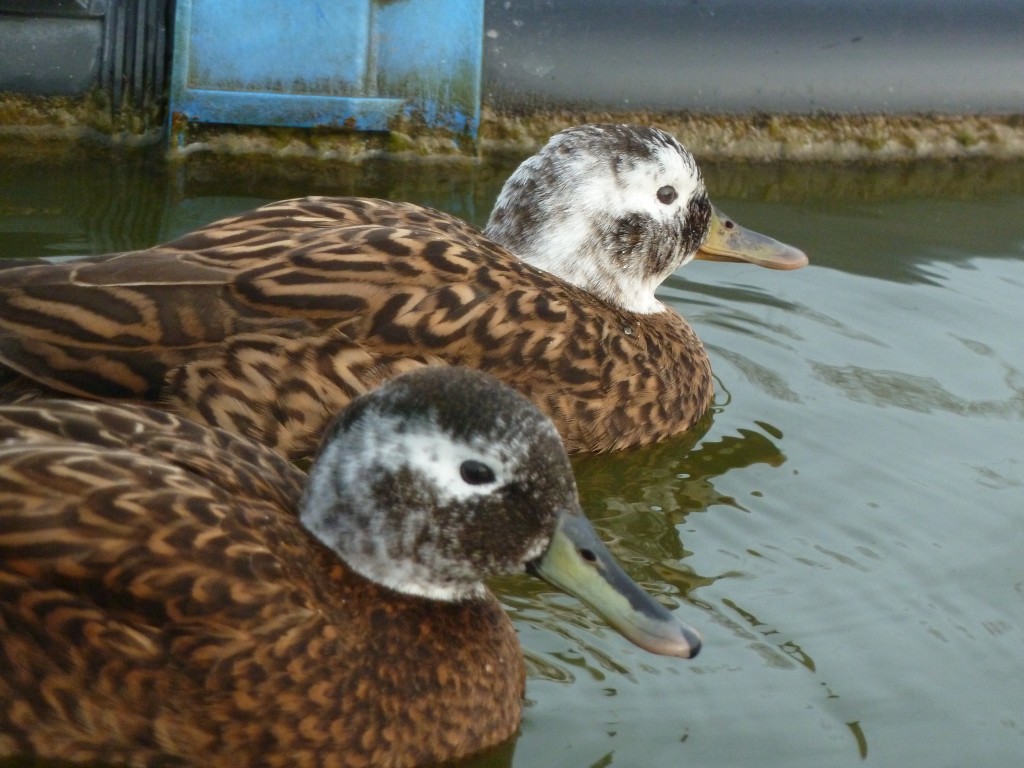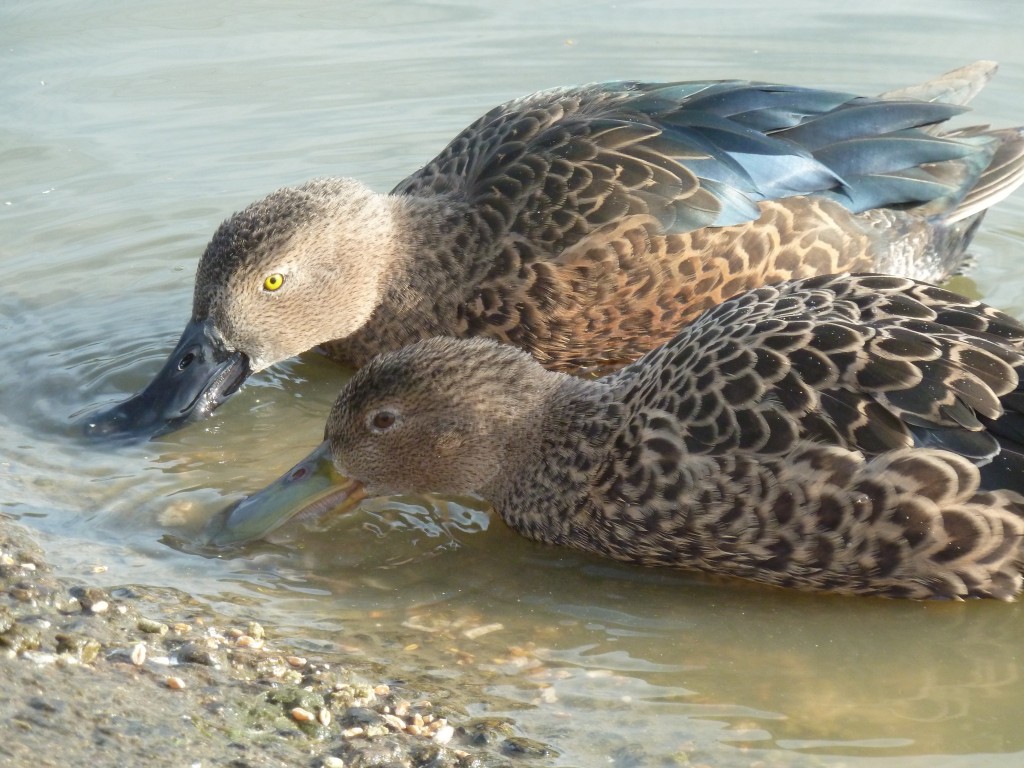New pairs in the breeding pens!
Whilst we are not new to breeding any of these species, they are all new 2014 additions to our breeding aviaries this season. Why is this important news you say? Well, a mixed exhibit is genuinely considered by many in the breeding business as a genuine art-form... Trying to encourage different species from all around the world to breed in perfect harmony can often prove extremely difficult. You have to address individual nest style, flock style, pair behaviour, feeding style, breeding time and group composition.
It might surprise you to discover that the three species featured below are some of the most observably aggressive of all the birds we breed! Their size belies their attitude, and these apparently sweet little ducks can genuinely rock the breeding boat through just sheer perseverance.

A small group of 4 Eyton's whistling duck/Plumed whistling duck used to occupy breeding aviary 2. They bred just once, before both females decided that they disliked the males and needed to be moved on. Introducing new females to the old males was not an option because the likelihood seemed to be that they would defend their current territory and lay down the law. The best way to do it was to confuse everyone by performing the introduction in an off site area that they none of them had seen before.
A couple of weeks in another pen, and their introduction to the aviary has gone very smoothly. It is pretty early in the season for whistlers to think about breeding, and so hopefully everyone else will get off to a good start whilst they are still getting in the mood. Calm they may be, but they still demand first go at feeding time, and can often be found hanging off the back of a puna teal if they feel that their personal space has been invaded. Bolshy little birds, but cute, and under-represented, and glorious in our collection in the Australian side pen. Long may they reign supreme!

A cheeky pair of Laysan teal were also added to every aviary. We haven't bred these guys in significant numbers for some years now, and being such a rare, unique and interesting little duck, their presence during Downy Duckling Days would be valuable for inspiring our visitors. Nothing toddles along quite like a Laysan they are incredibly charcterful.
Can you sex the birds above by sight? Don't get confused with the whiteness on their faces as all birds exhibit more due to age. Males tend to have more irridescent green on their heads and darker chests also but that is no guarantee. The male has a perfect clear stripe down his bill. The female has a big splodge with occasional freckles.

Cape shovelers are a completely new addition in my Slimbridge lifetime. We have always previously put the grumpy little blighters in the outside duckery side pens because they are so moody and irritable. This year however, whilst the old time breeders trundled off to their traditional breeders, we have put all of 2012's babes into the breeding pens in 3 pairs. It didn't take them long to get started! After 2 years fattening up in the clean Polytunnel, they are now out foraging in the shallows and dabbling beak to beak a feed time. Their lust for life has been replicated in their breeding efforts also. 2 pairs have already made nests with a ridiculously high egg count. Poor female number 1 has 5 of her own and 2 parasitic balck duck eggs extra to contend with! Their little breasts are only so big after all, and they tend to lay the maximum they think they can manage! I don't have particularly high hopes for fertility, being after all inexperienced juveniles.
It is however lovely to have all of these beautiful birds in the breeding pens this season :)

